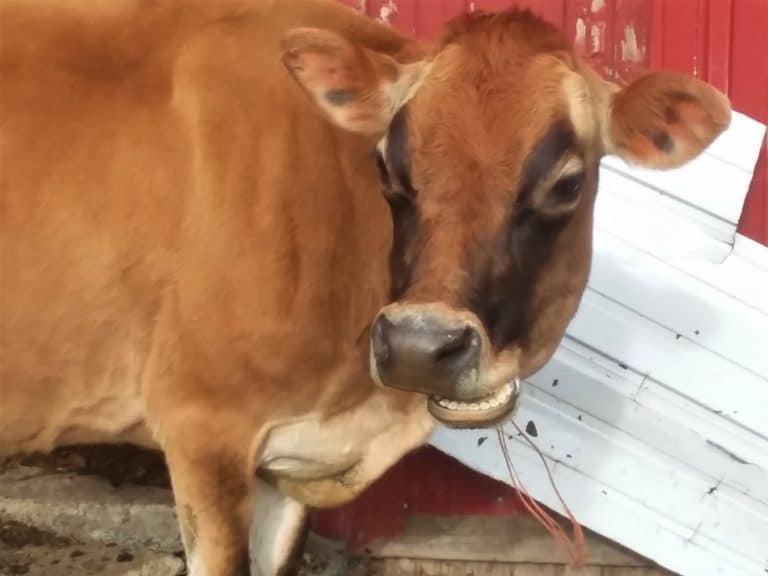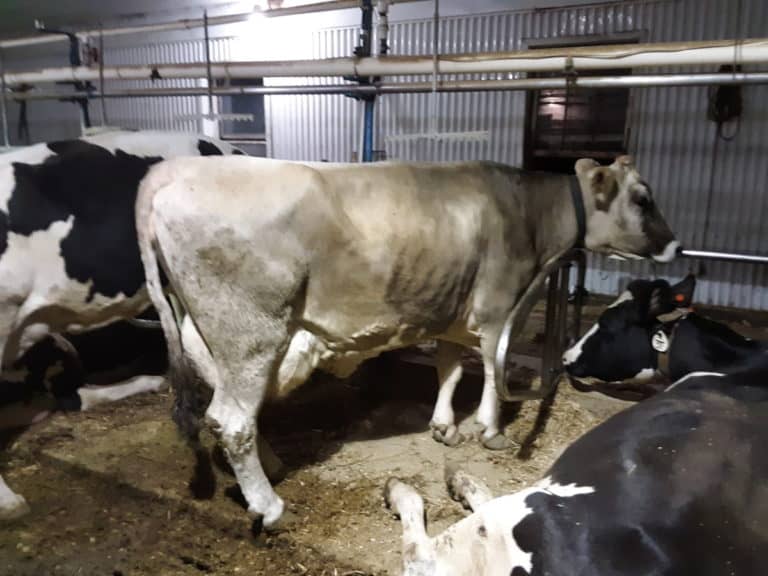Your Family Cow’s Milk Production: What To Expect
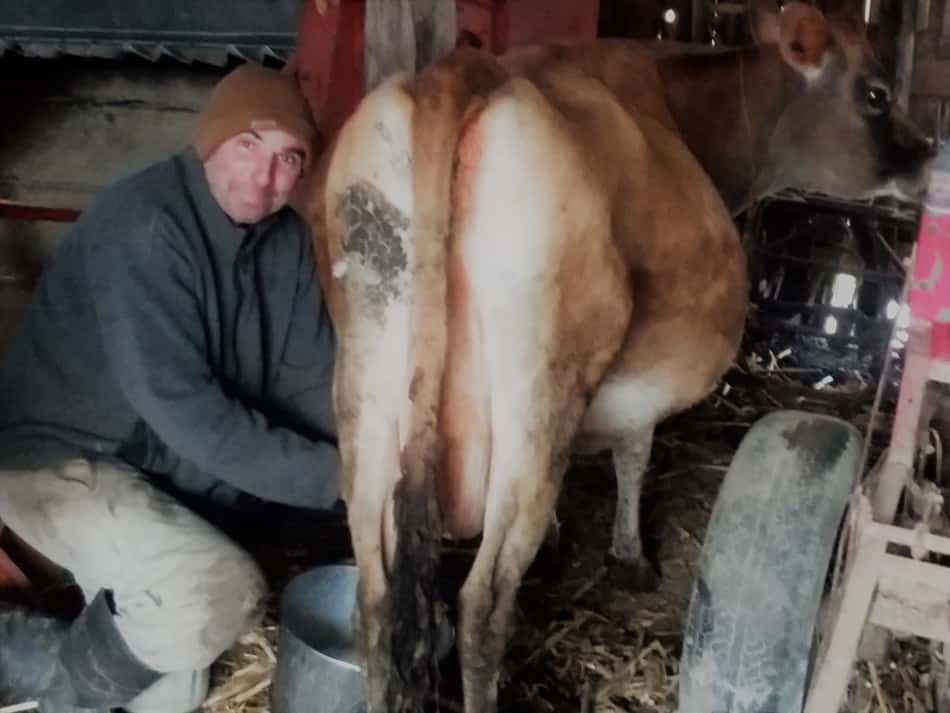
Wondering when will your family cow produce the most milk? Will her production stay the same all of the time or does the amount go up and down?
Understanding your cow’s natural milk production cycle will help you keep her healthy and keep you drinking plenty of real milk!
The natural milk production cycle of a dairy cow will start with the birth of her calf, volume will increase up to 6 weeks post calving then gradually decrease until she is dry (not milking) at month 10.
When you understand your cow’s natural milk production cycle, you will be able to make decisions regarding her care and nutrition to help her be at her best, all year.
If you just want to know how much milk to expect, check out my article Family Milk Cow: How Much Will She Milk? where I go over how much milk you are likely to get and why!
How do you know if you’re ready? My guide “Are You Ready For A Family Cow?” will walk you through the things you need to have figured out, including feeding needs and daily care, before you get your cow.
While it’s true that cows are individuals, the lactation curve, which is the milking part of the milk production cycle, looks roughly the same in all cows.
The only difference is how high is the top of the curve and when will she reach the bottom of the curve.
I’ve always found it interesting that the lactation curve is called a curve when really it looks like a mountain. Here is an example of a generic family cow.
Is A Family Cow Affordable? goes over the numbers of milking your own cow compared to buying real milk from a local farmer.
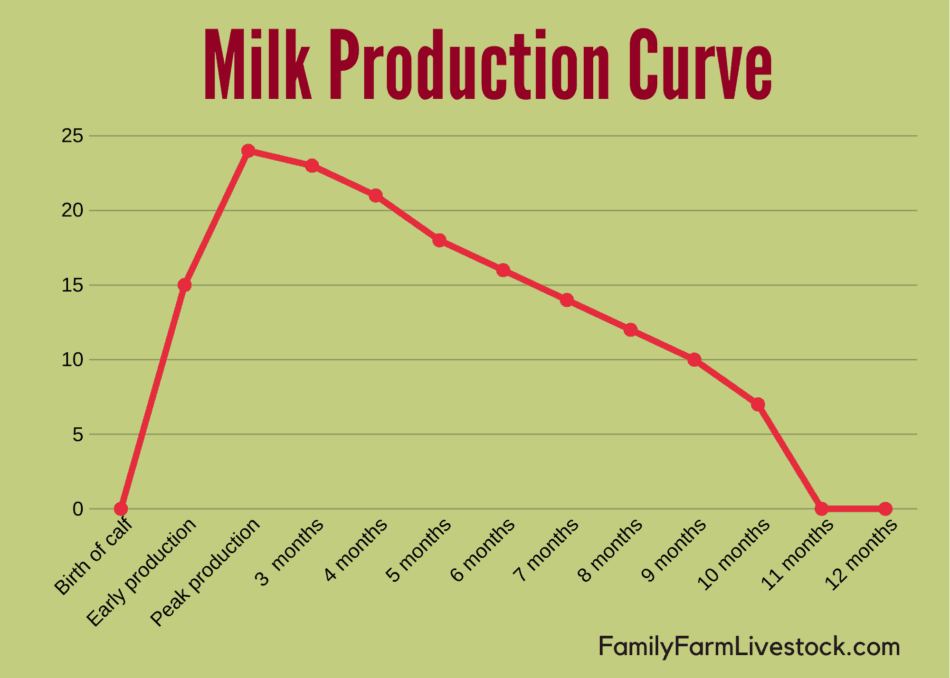
What is the milk production cycle?
The milk production cycle is the natural variation in milk production of a mammal.
You may not think of it this way, but any mom that produces milk for her baby is in a milk production cycle.
We just normally don’t worry to much about it! Sheep, goats, camels, beef cattle, etc. all have milk production cycles that follow the same basic pattern.
The easiest place to start talking about the milk production cycle is with the birth of the calf.
Since the cycle is continuous, we could actually start any where in the cow’s life. To keep it simple, we’ll start with the birth of her calf.
The basic milk production pattern starts with colostrum for the newborn.
The colostrum will gradually transition over to milk in 2-3 days, (you’ll be able to see it change from honey like and yellow to milk).
Now milk production will increase to the highest volume of milk she will produce this lactation, which happens at 6 weeks post birth.
This is called peak production, meaning the most milk per day.
After peak production, milk volume gradually tapers off until weaning. Now the cow is dry, not milking, and will have a break for 2 months until she has the next calf.
Should You Buy A Cow Or A Heifer? shows you the reasons why you should definitely buy a cow, not the heifer!
Get your cow bred back on time
Remember that this is the ideal milk production cycle, sometimes reality is a bit different. The most likely place to get off track is with not getting your cow bred back on time.
The ideal breed back time is the third month of lactation, so she’ll have her next calf around the time she had the last one.
If you are late getting your cow bred back, it’s not a huge deal. It is important to keep in mind, since no cow will milk forever!
To restart her milking, she needs to have another calf so you can get more milk!
How do you know if you’re ready? My guide “Are You Ready For A Family Cow?” will walk you through the things you need to have figured out, including feeding needs and daily care, before you get your cow.
Wondering About A.I. For Cattle? goes over one of your options for getting your cow bred. A.I. in dairy cows is pretty easy, since you are around the cow daily.
Is the cycle the same for commercial cattle, or are family cows different?
The short version is: yes, the milk production cycle is the same for commercial and family cow dairy cattle.
All dairy cattle, your family cow and the commercial dairy cows in a big milking herd all have the same basic milk production cycle. The main difference is in how you manage the production.
Commercial dairy cattle are being managed for peak lactation volume for as much of the lactation as is healthy.
You are going to be wanting a lower daily milk volume than that! For commercial dairy farms, we are talking about 8+ gallons per day versus the 1.5-2 gallons that you would want!
Jersey Cattle is an overview of the Jersey breed on the Oklahoma State University Breeds Of Livestock site, if you want to know more about the breed.
Why does the milk production cycle matter to me?
The biggest reason you will want to know your cow’s milk production cycle is to help her stay healthy and performing at her best.
You need to know that if she just had her calf 2 weeks ago, she is going to be on an increasing plane of nutritional needs.
You also need to be aware of her approaching the dry period, so that you do not over feed her! Fat cows tend to have more calving problems!
Aside from being aware of her changing nutritional needs, you should also know that you can influence her milk production.
Actually, with your daily husbandry, whether you realize it or not, you are influencing her milk production.
Take caution here, you can influence for the good and for the bad!
For instance: if you want to have plenty of milk at the end of her lactation, you need to make sure you do things right at the beginning and through the rest of the milking period.
Slacking off on her care or nutrition will lower her milk production at the highest volume times and lower production at the lowest volume times.
You may be thinking, so what? I get more milk now than I need so why worry?
While it’s true, you are very likely to get more milk than you need at the beginning of the cycle, how will she be milking at the lowest part of the cycle?
It can be frustrating to go out into the cold winter mornings to milk your cow for just a quart or two of milk.
Once you are at this low level of milk production, there is no magic quick fix, you are stuck with what you’ve got.
You have to wait until the start of a new lactation for the milk volume to go up again.
Milk will go up again with the birth of her next calf, but that won’t fix the situation now!
If you slacked off early on in her lactation, don’t blame the cow for low production now!
You are just getting out what you put in, poor management will return you poor results.
The milk production cycle always, always, always follows a curve! The lower the peak of the curve the lower the end of the curve will be.
If you want or need a minimum amount of milk from your cow per day, the way to ensure your supply later is to do a great job now!
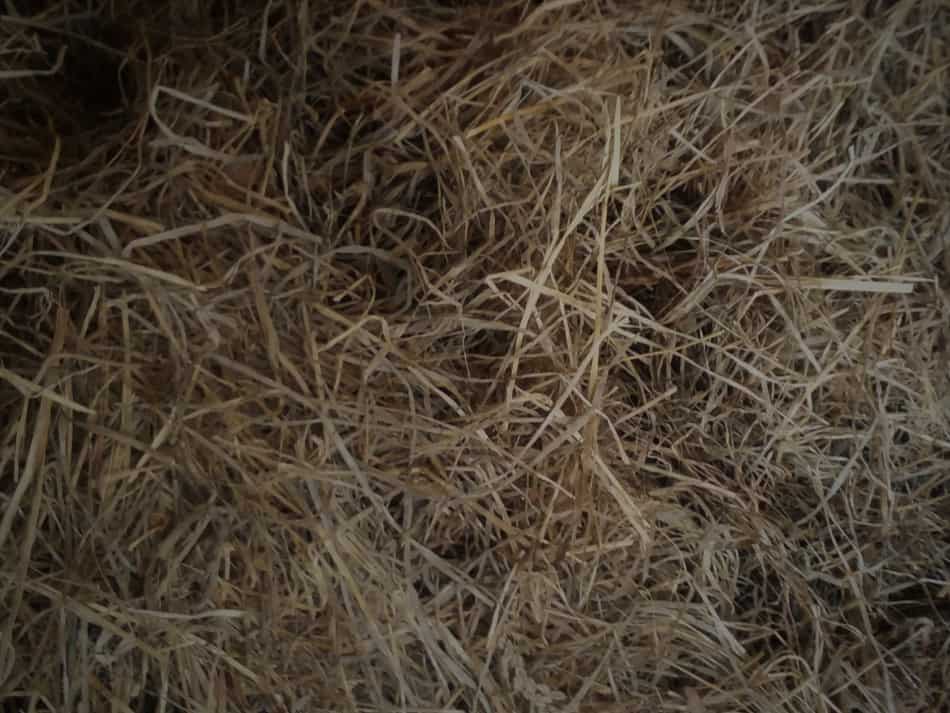
What can I do to help keep my cow milking well?
I’m glad you asked, really! You can help your cow be at her best by keeping her nutrition levels high and keeping a regular milking schedule.
Here’s the catch, the only influences you can have over her milk production are to help her maintain a higher level of milk production or you can do things to lower her milk production, that’s it.
You can not raise her milk production, only her genetics have control over her potential.
Your daily care and what you provide for her to eat will help her perform her best, or will limit her ability to milk to the best of her ability.
Consistent care and good nutrition will allow her to be at her best for you.
How do you know if you’re ready? My guide “Are You Ready For A Family Cow?” will walk you through the things you need to have figured out, including feeding needs and daily care, before you get your cow.
Your cow’s nutrition determines milk quality
Feeding your cow right is easiest on grass. Let her eat all she wants and you are set!
If you are buying hay, make sure it is working well for her by checking her hair coat. If she is shiny and full, she is getting what she needs.
For more details on feeding your family cow, check out my Feeding Plan For Your Family Cow.
This article also goes into ways to check to see if your cow is fat, a must read for anyone new to dairy cattle! She’s not a beef cow!
Healthy weight for your family cow looks a little different than healthy weight for a beef cow.
Your cow needs a milking schedule
The main thing here is to set up a routine and stick to it! Cows love routine!
She will be at her best when your management includes a set milking time and routine.
Here is an article on setting up your milking routine Keeping A Family Cow
Summary
You have a huge influence over the production cycle of your family cow.
Treating her well and giving her all she needs through out the entire milk production cycle will allow her to provide well for you and your family.
How do you know if you’re ready? My guide “Are You Ready For A Family Cow?” will walk you through the things you need to have figured out, including feeding needs and daily care, before you get your cow.

